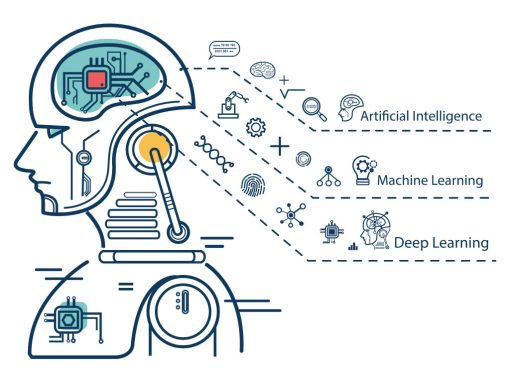ONLY A HUMAN CAN BE AN INVENTOR ON A US PATENT
The United States Patent and Trademark Office (USPTO) has considered an inventorship claim on behalf of the AI “DABUS” and decided that only a natural person can be an Inventor on a US patent. This is in line with practice at the European Patent Office (EPO) and the UK Intellectual Property Office (UKIPO)
Earlier this year we reported that the European Patent Office (EPO) has stated that the requirements for being an inventor can only be fulfilled by a natural person.
The United States Patent and Trademark Office (USPTO) has now considered the parallel subject matter and inventorship claim from the Artificial Intelligence (AI) DABUS and reached the same conclusion, i.e. that an inventor must be a human “natural person” in its decision in response to US patent application no. 16/524,350.
The “DABUS” application, (US patent application number 16/524,350 for “Devices and Methods for Attracting Enhanced Attention) gave the sole inventor’s given name as “DABUS” and the family name as “Invention generated by artificial intelligence.”
At the time of filing the human applicant, Stephen Thaler, who submitted the patent application, explained to the USPTO that DABUS conceived the invention through use of trained neural networks and without human intervention.
The US Patent Act does not expressly limit inventorship rights to humans, but does suggest that each inventor must have a name, and be an “individual.”
(f) The term “inventor” means the individual or, if a joint invention, the individuals collectively who invented or discovered the subject matter of the invention.
35 U.S.C. 100(f).
The USPTO considered that the application failed to identify the inventor by his/her legal name and so issued a “Notice to File Missing Parts” to correct this apparent error.
Thaler subsequently filed a petition requesting supervisory review of inventorship of the application. Thaler claimed that DABUS independently and autonomously created the claimed invention. Thaler stated that DABUS is a type of “Creativity Machine” or connectionist artificial intelligence, and provided a brief explanation of its structure and working arrangements. Specifically, Thaler submitted that DABUS received training in general knowledge in the relevant field only, and then independently conceived the invention and identified it as novel. Thus, Thaler considered that if such an action were to be carried by a human then they would be named as the inventor.
However, the USPTO considers that inventorship in the US is limited to natural persons and so has maintained the requirement that a legitimate response to the Notice to File Missing Parts must be filed for this patent application to prosecuting this patent application.
The USPTO based this reasoning on relevant US statutes supplemented by various Federal Circuit decisions in other non-patent contexts. The decision also observed that statutes such as 35 U.S.C. §§ 100(f)-(g) and § 101 use words such as “individual” and “whoever” in the context of inventorship, thus implying they relate to natural persons.
Furthermore, 35 U.S.C. § 115(b) requires that the oath or declaration be signed by an individual when that individual believes “himself or herself” to be an inventor of the claimed invention. Also, the USPTO found support for the concept that providing an invention relies upon mental processes, not simply any act of creation (citing Univ. of Utah v. Max-Planck-Gesellschaft and Beech Aircraft Corp. v. EDO Corp.) It was also noted that the Manual of Patent Examining Procedure’s (MPEP) definition of “conception” in sections 2173.01 (II) and 2138.04 is consistent with these interpretations.
As noted above, and in our previous article, Thaler also filed patent applications in Europe and the United Kingdom, identifying DABUS as the alleged inventor. Like the USPTO neither the European Patent Office (EPO) nor the UK Intellectual Property Office (UKIPO) accepts DABUS is an inventor according to their respective law and practice.
The EPO concluded that the rights of a patent holder to enforce or transfer their patent rights require legal personality in order to be exercised and, an AI machine lacks such personality. In slight contrast, the UKIPO unambiguously recognized DABUS as the creator of the claimed invention, but concluded that there was no suggestion that the law as it stands is intended to allow AI machines to be inventors on a patent application, nor is there legislative history or judicial interpretation to support this view.
Thus the USPTO has unambiguously found that AIs (and, indeed non-humans in general) cannot be listed as inventors on a US patent application
However, there are other related matters to be resolved under US law. Might the USPTO recognise non-humans as the “creators” of inventions, similarly to the UKIPO? Might a human who has assisted in training or building an AI that produced the invention file a patent application as a co-inventor? Might claims that are wholly or partially provided by AI models have to be excluded because the AI cannot be an inventor? 35 U.S.C. § 115(b) requires certification by a listed inventor that they are the original inventor or joint inventor of the claimed invention. Can a human inventor make this certification if they are listed as the sole inventor, but an AI at least partially provided the “inventive step?”
Thus, as for the EPO the current practice of the USPTO is that an inventor must be a human, and failure to designate at least one human as an inventor will result in refusal of a patent application. This implies that patent protection cannot be obtained for inventions made by any form of AI, unless the human who developed the AI could be considered an inventor.
We have previously opined that the EPO decisions are likely to be appealed. We think that the USPTO’s decision is similarly likely to be appealed. This is not least because of recent jurisprudence in which the Federal Circuit has repeatedly equated human mental processes with the processes inside a computer processor. Thus this and the further questions touched on above relating to non-human creators of intellectual property will need to be addressed in the future. This is especially the case as AI has the potential to revolutionise many different technologies. It is not clear how this issue will be resolved. It is certain that there will need to be a route by which inventions can be claimed. Whether this might be by the AI itself, by a route akin to copyright where a ‘producer’ (AI trainer/builder) arranges for a ‘recording’/invention to be made and owns a resulting copyright, or another route, remains to be seen.
Share this article
Our news articles are for general information only. They should not be considered specific legal advice, which is available on request.









